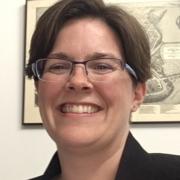Midwives are on the frontlines of the COVID-19 pandemic. Whether serving in hospitals, birth centers, or homes, midwives are providing essential health care. Midwives are experiencing a sharp increase in demand for their care in community birth settings: homes and freestanding birth centers. Community birth in a pandemic supports the need to reduce the spread of disease through social distancing while preserving much-needed hospital capacity for lifesaving care of COVID-19 patients.
Unfortunately, the successful campaign to eradicate midwifery in the U.S. 100 years ago has persistent repercussions today. The continued marginalization (and in some states, criminalization) of midwifery has left us with a woefully inadequate capacity and infrastructure to deliver safe maternity care outside of the hospital during a pandemic.
In a world where midwifery is mainstream, and the World Health Organization has designated 2020 as the year of the Nurse and the Midwife, the United States stands out in our lack of access to midwives. Despite the overwhelming evidence of the excellent outcomes with midwifery-led care, midwifery care integration is inconsistent and inadequate across the country. We urgently need to make greater use of midwives to improve our abysmal and tragic outcomes, with astoundingly high rates of preventable maternal and infant deaths.
During a pandemic, out-of-hospital birth is essential to minimizing transmission, maintaining health, and efficiently utilizing medical resources. Midwives who specialize in out-of-hospital birth should be involved in emergency planning for maternity care during a pandemic.
Midwives who specialize in out-of-hospital birth have expertise in what is needed to make out-of-hospital birth successful and can provide essential insight and training to other providers and planners about how to plan for and support birth with less medical personnel and technology.
Even in normal times, giving birth at home or in a freestanding birth center (also known as community birth) is a safe option for most pregnant people. 87% of service need can be delivered by midwives, when educated to international standards. During a pandemic, when hospitals are overwhelmed with sick patients, healthy pregnant people increasingly seek to give birth out-of-hospital. During the SARS outbreak in 2003, parents made last-minute changes from a planned hospital birth to a planned home-birth to avoid the risk of hospital-based SARS exposure.
- Midwives are the most common health care providers in out-of-hospital birth, (though sometimes physicians also work in homes or birth centers).
- According to the World Health Organization, “midwifery encompasses care of women during pregnancy, labor, and the postpartum period, as well as care of the newborn. It includes measures aimed at preventing health problems in pregnancy, the detection of abnormal conditions, the procurement of medical assistance when necessary, and the execution of emergency measures in the absence of medical help.”
- In the United States there are three midwifery credentials that all meet the educational requirements of the International Confederation of Midwives. Those credentials are the Certified Nurse Midwife (CNM), the Certified Midwife (CM) and the Certified Professional Midwife (CPM).
- The CPM is the only midwifery credential that requires knowledge about and experience in out-of-hospital settings, making them uniquely qualified providers.
- Integration and regulation of CPMs varies from state-to-state, with CPM licensure or authorization to practice in 35 states and Washington, D.C. CNMs are regulated in every state, though scope-of-practice varies. CMs are only licensed in a handful of states.
- In addition to nationally-credentialed midwives, some states and communities have: midwives with local credentials (e.g. midwives licensed based on state criteria); traditionally-trained midwives; religious practitioners; or tribal healers that provide midwifery care.
- A 2018 study showed that states that integrated credentialed midwives had better health outcomes including fewer neonatal deaths, fewer preterm births, fewer C-sections, higher breastfeeding rates.
- Despite being the primary care providers for healthy birth all over the world, midwives in the United States remain not-well-integrated into the maternity care system. This impacts outcomes in normal times, and will expose the problems with lack of integration during a pandemic.
- In a pandemic, this lack of integration means that low-risk, healthy pregnant people who do not need to birth in the hospital will have nowhere else to go and medical providers who could otherwise treat sick people will be needed to care for pregnant people.
- Despite these limitations, the United States has the capacity to increase the volume of out-of-hospital births during this pandemic, and relieve some of the pressure on hospitals.
- Doubling the current rate of out-of-hospital birth may be both feasible and worth pursuing to relieve pressure on hospitals. This could amount to an additional 62,000 births out-of-hospital in a year with each state doubling its rate, from an average rate of 1.6% to 3.22%.
- Barriers to out-of-hospital birth should be eliminated during a pandemic to meet the demand and relieve pressure on hospitals.
- Decriminalize the practice of midwifery in all states and territories.
- Provide all practicing midwives with information, equipment, and resources regarding pandemic risks and response to promote the safety of the workforce and the public.
- Remove barriers for midwives to practice autonomously and attend out-of-hospital births.
- Recognize and treat midwives as health care providers, with access to the resources, exemptions, provisional licensure, and special orders for pandemic response.
- Reimburse for midwifery care at 100% of the rate of physicians for the same service, whether from insurance or Medicaid.
- Remove barriers to open new freestanding birth centers to increase capacity.
- Fast-track student midwives with provisional licenses when they are close to completing their credential.
- Preserve hospital personnel and beds for pandemic response by encouraging hospitals and hospital-based providers to refer low-risk births to out-of-hospital midwifery care.
- Require hospitals to meet best practice transfer protocols to ensure a safe and efficient interface with out-of-hospital birth providers when a laboring patient is in need of a higher level of care.
With increased demand for out-of-hospital birth and increasing strain on our hospitals, policy makers and institutions must act quickly to involve out-of-hospital midwives in pandemic planning and response. These policy recommendations are available in printer-friendly form at FAM’s web site. Please contact FAM and we will connect you with national and local midwifery resources, (resources@formidwifery.org).
The FAM pandemic policy statement was developed in collaboration with Indra Lusero, JD, of Elephant Circle, Melissa Cheyney, PhD., and FAM Board Members Janis Gildin, Kirsten Kowalski-Lane, RaShaunda Lugrand, Lauren Miller, Chanel Porchia-Albert, Audra Post, and Tanya Smith-Johnson.




The views and opinions expressed in this post are those of the author(s) and do not necessarily reflect those of MomsRising.org.
MomsRising.org strongly encourages our readers to post comments in response to blog posts. We value diversity of opinions and perspectives. Our goals for this space are to be educational, thought-provoking, and respectful. So we actively moderate comments and we reserve the right to edit or remove comments that undermine these goals. Thanks!